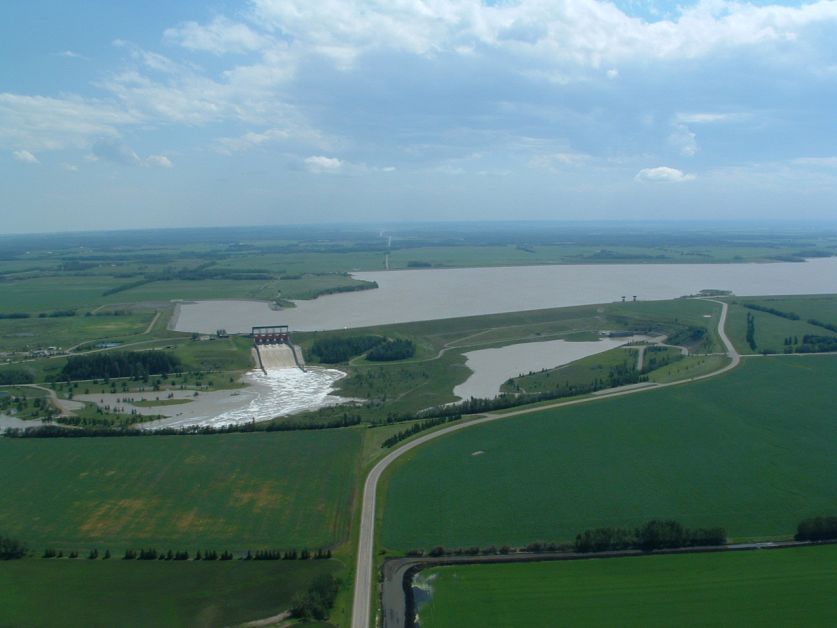Dickson Dam, located approximately 180 kilometres northwest of Drumheller on the Red Deer River, plays a key role in the ongoing flood mitigation efforts in the Drumheller Valley through flow regulation and communication with municipal operators.
Director of North Central Region of Alberta Environment and Parks, Water Infrastructure, and Operations Branch Rick Friedl was one of the operators involved at Dickson Dam during the 2005 flood event and took time to speak with the Mail to explain the purpose of the dam and its role in the 2005 and 2013 flood events.
“The primary purpose of the Dickson Dam is to provide assured water supply year-round downstream,” Friedl says. He explains his group’s region is responsible for operations and maintenance of multiple water infrastructure throughout central Alberta, including the dam.
Prior to the construction of Dickson Dam in 1983, water flow in the Red Deer River would drop as low as two cubic metres per second in winter months.
Through capturing and storing water in the reservoir throughout spring and summer months, operators are able to supplement river flow during winter months to maintain a consistent minimum flow of 16 cubic metres per second. This in turn provides higher water quality for fish, aquatic wildlife, and human consumption, while also generating a peak 15 megawatts of hydroelectric power as water flows from the reservoir.
As water levels in the reservoir decrease throughout the winter months, empty storage space is created which operators can then use to help attenuate potential flood events. However, by late-May to early-June the reservoir fill cycle begins to ensure it is full coming into the next winter cycle, thereby reducing the amount of available storage.
Friedl notes flood attenuation is a “complex task,” and success is dependent on a number of factors ranging from storage availability in the reservoir, and the amount of notice operators are given for a potential flood event--both of which can vary on each given year.
“Historically, Dickson Dam has done a very good job attenuating flood events on the Red Deer River, to the point the downstream impacts related to small and medium sized floods are reduced,” he said. “However, large to extreme flood events have the potential to exceed the dam’s ability to provide attenuation.”
In large flood events, due to more flow into the reservoir, there is less attenuation. “Once the reservoir is full, inflows must equal outflows” he adds.
In 2005, one of the largest recorded floods for the Red Deer river basin, operators had only a few days’ lead time of an approaching storm at the headwaters of the Red Deer River.
Given the lead time, operators were able to reduce inflow at the reservoir from approximately 2,300 cubic metres per second to a peak outflow of 1,550 cubic metres per second downstream of the dam, which equates to a 30 per cent reduction in flow.
Friedl says, had the dam not been in place, water would have topped the existing dikes throughout the Drumheller Valley and would have resulted in worse damages. He also attributes the cooperation and coordination efforts between operators at Dickson Dam and emergency municipal operations within the community.
Designing the new dikes and berms to be adaptive will allow the Flood Mitigation Office to accommodate higher rates of flow than seen during the 2005 floods, and can work in conjunction with operations at the dam to provide an added layer of protection to vulnerable riverside communities such as the Town of Drumheller.




























